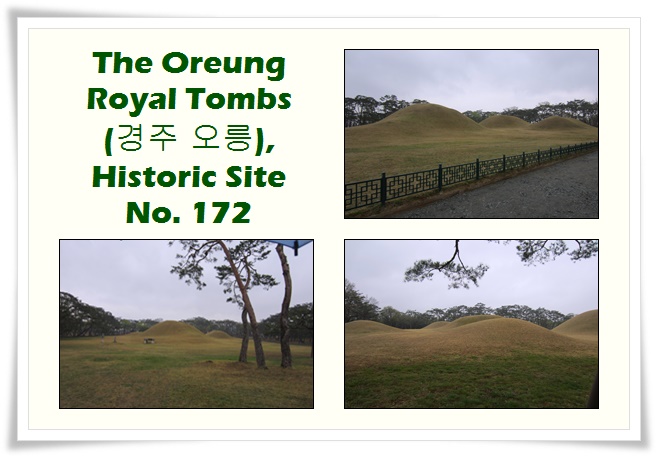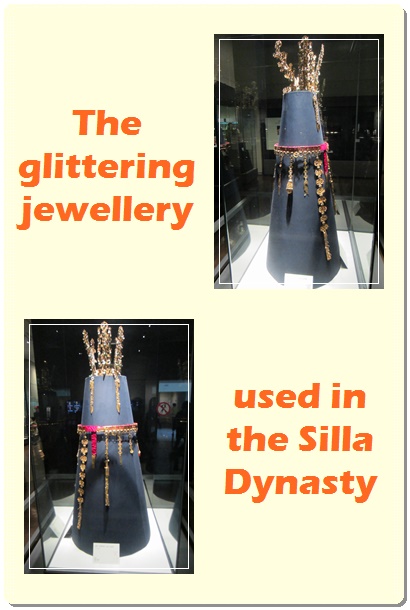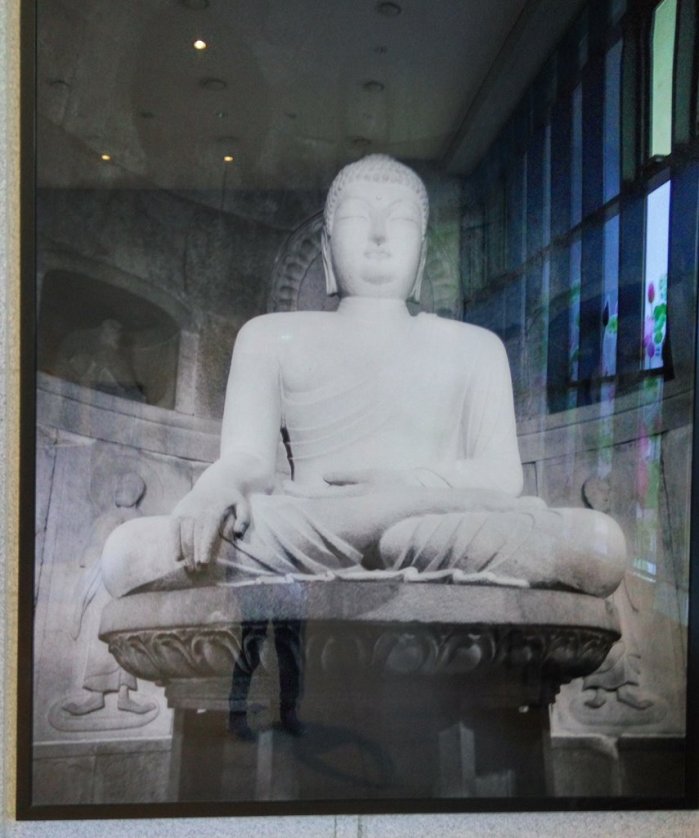It started to rain as we headed back to the city centre’s Gyeongju National Museum (국립경주박물관). Not sure if it’s because of the rain, the indoor admission-free museum was very crowded with visitors. There are 3 indoor exhibition halls in the museum: Archeology Hall, Art Hall & Wolji Hall, as well as an outdoor museum garden.
I guess I’m really not a history person, especially when it’s history of a foreign country. So I couldn’t really resonate with the mass amounts of artifacts displayed in the halls. Here are photos of some of the displays that I found some significance & interest in:
We spent about 1 hour there before moving to the next destination. Originally, my friends had wanted to bring me to the famous Daereungwon Tomb Complex (대릉원 – 천마총), where 23 large ancient tombs of kings and nobles of the Silla Kingdom can be found. However, due to the heavy rain & bad weekend traffic jam, it was impossible to get to Daereungwon so we gave up. Instead of this famous tourist site, my friends brought me to another ancient tomb site, known as the Oreung Royal Tombs (경주 오릉), which means 5 Royal Tombs in Korean. It is the final resting place of 4 kings of the Park clan—King Park Hyeokgeose (founder of the Silla Kingdom), King Namhae, King Yuri & King Jabi, as well as 1 queen (Queen Aryeong, wife of King Park Hyeokgeose). Admission ticket costs KRW1,000 (S$1.20) per adult.
 This tomb site was almost empty with hardly anyone in sight! But it’s not hard to know why, there’s really nothing to see except these 5 ancient round tombs you see in the collage above. It felt so chilly there, we didn’t stay too long too, even my Korean friends were disappointed at this site. We thought it should have been free admission… 😦 The only interesting thing I found out here was, the tombs in the Silla Kingdom were very uniquely shaped like domes, not like the present-day tombs we see.
This tomb site was almost empty with hardly anyone in sight! But it’s not hard to know why, there’s really nothing to see except these 5 ancient round tombs you see in the collage above. It felt so chilly there, we didn’t stay too long too, even my Korean friends were disappointed at this site. We thought it should have been free admission… 😦 The only interesting thing I found out here was, the tombs in the Silla Kingdom were very uniquely shaped like domes, not like the present-day tombs we see.
Last stop in Gyeongju before going to Singyeonju Station to board my KTX train to Busan was at Poseokjeong Pavilion Site (포석정지).
Again, the admission fee at this site is KRW1,000 per adult. I must say it’s not exactly a must-see site for the time & $ spent. It was a separate royal palace for the Silla kings to hold banquets with the nobles. With the palace gone now, what remains is an abalone-shaped granite stone water canal, as you can see in the top right image of the collage above. Next to the pavilion is Poseok valley, which was also much loved by the Silla people for its clean water and beautiful features. Now, the zelkovas, pine and bamboo trees surrounding the pavilion create a cozy & relaxing ambience. At least the natural scenery makes the site slightly more worthwhile to visit than Oreung. 😛
Time flies & this marks the end of my memorable Andong-Gyeongju weekend trip with friends, too short! Hope to explore more exciting attractions in Gyeongsangbuk-do in future! 😉






